The standard of roasting degree of fine coffee by the American Coffee Association (SCAA)
American Coffee Association (SCAA) standard for baking degree
This standard uses infrared caramelization tester technology (Agtron) to measure the color of coffee beans to determine the roasting degree of coffee, and divides the color from light to deep into eight equal parts to make eight standard color blocks, which can be used as the identification of roasting in the coffee industry.

Distinguish according to the baking degree preferred by each country.
This is also the earliest distinction of coffee roasting degree, because different countries and regions have different taste preferences for coffee roasting degree, so it is known as roasting degree nationally or regionally, such as Italian roasting, French roasting and so on. However, the baking degree of these different preferences are integrated and arranged from shallow to deep to form the distinction index of baking degree, but because the standard is too general, different bakers have different identification of baking degree.
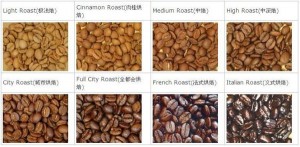
Distinction of customary baking degree in Taiwan
In recent years, Taiwan has mostly focused on the changes in the sound of baking to determine the degree of baking.
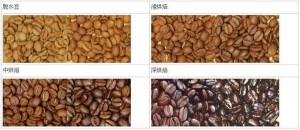
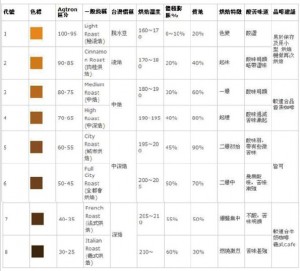
Common sense of coffee roasting
Through the burning of the fire, release the aroma of coffee, and sprinkle the sour, sweet and bitter taste of ─ contained in each bean incisively and vividly, from insipid raw beans to the endless aftertaste of mellow ─ roasting in the cup, which is the most important stop to outline the character and nurture fragrance in the long journey of every coffee bean.
Whether in a professional roaster, on your own fire or in the oven, coffee beans have to go through many chemical changes during this 12-16-minute conversation with a hot cut at a temperature of up to 450C, making a second popcorn-like crisp sound and losing 15% ─ 25% of water.
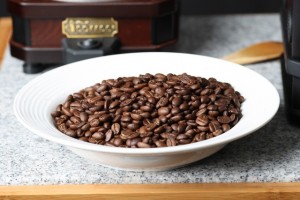
Baking process, like popcorn full of fragrance and joyful bouncing sound. From raw beans, light roasting to deep roasting, the water is released again and again, the weight is reduced, but the volume slowly expands and bulges, the color of coffee beans deepens, the fragrant oil is gradually released, and the texture becomes crisp. Raw beans ─ each coffee cherry contains two raw beans, and the fragrance is still deep in it, waiting to be discovered. Raw beans contain a lot of chloric acid, which disappears with the baking process, releasing familiar and pleasant fruit acids such as acetic acid, citric acid, and malic acid found in wine. Baking is just right to present these beautiful sour tastes in moderation, while if you bake them too much, they will be completely masked. When baked for 5-7 minutes, the beans begin to release water, changing from light green to orange, emitting the unique aroma of creamy roasted vegetables.
Light baked ─ when the beans make the first light sound, the volume expands at the same time, and the color changes to a delicious cinnamon color, so it is also called cinnamon raost or half-city roast. Acidity dominates the flavor of shallow roasted beans, texture and taste have not been brought into full play, so they are generally used as canned coffee, can not meet the real coffee experts.
When roasted in medium ─ for 10-11 minutes, the coffee beans are elegantly brown. New Yorkers like to start each day by roasting coffee beans with fragrant milk and sugar at breakfast, so this method of baking is also called breakfast roast or city roast. Medium roasting can not only preserve the original flavor of coffee beans, but also moderately release aroma, so Blue Mountains, Colombia, Brazil. Wait for a single cup of coffee, choose this kind of baking method. At 12-16 minutes, the oil begins to surface, and the beans are burned to a bright dark brown, called full-city roast. Some people think that the sour, sweet and bitter taste of coffee reaches the perfect balance, and the character of coffee beans is clearly carved out.
The darker the color of deep-roasted ─ coffee beans, the sweeter the flavor, when the oil has been turned into caramel, bitter, endless aftertaste, the most suitable for brewing strong Espresso coffee, so it is also called Italian roasting. Moderate roasting gives life to the coffee beans and turns into an intriguing sour, sweet, bitter and astringent taste. However, people who are sensitive to caffeine might as well choose deep-roasted beans as much as possible, because caffeine will slowly escape during baking, so the deeper the roasted beans, the lower the caffeine content.
Note: the sour and bitter taste of roasting degree will still vary from coffee to coffee. Tasting advice is only a personal opinion, and the main way to drink varies from person to person.
Important Notice :
前街咖啡 FrontStreet Coffee has moved to new addredd:
FrontStreet Coffee Address: 315,Donghua East Road,GuangZhou
Tel:020 38364473
- Prev
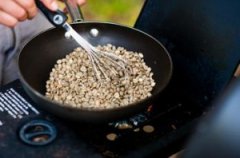
The principle of coffee roasting is to directly heat the roast.
To put it simply, baking is heating the baking directly. Unlike cooking, you don't need oil, water, salt or sugar to bake. Just put the raw coffee beans in a heat-resistant container, then heat them on the fire, stir the coffee beans constantly while heating, so that each bean is heated evenly, and then stop heating when we reach the desired level.
- Next
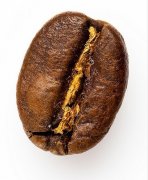
How to learn coffee roasting? Twelve tricks of coffee roasting
For individuals, the best coffee roasting is the product of a combination and balance of reason and sensibility. The rational part is called "practice", and the perceptual part is called "mind method". The following discusses the tricks of coffee roasting "practice" and "mind method" respectively. Twelve tips for coffee baking 1) make good use of the morning (when your senses are sharpest) Don't be a Midnight Roaste
Related
- Beginners will see the "Coffee pull flower" guide!
- What is the difference between ice blog purified milk and ordinary milk coffee?
- Why is the Philippines the largest producer of crops in Liberia?
- For coffee extraction, should the fine powder be retained?
- How does extracted espresso fill pressed powder? How much strength does it take to press the powder?
- How to make jasmine cold extract coffee? Is the jasmine + latte good?
- Will this little toy really make the coffee taste better? How does Lily Drip affect coffee extraction?
- Will the action of slapping the filter cup also affect coffee extraction?
- What's the difference between powder-to-water ratio and powder-to-liquid ratio?
- What is the Ethiopian local species? What does it have to do with Heirloom native species?

